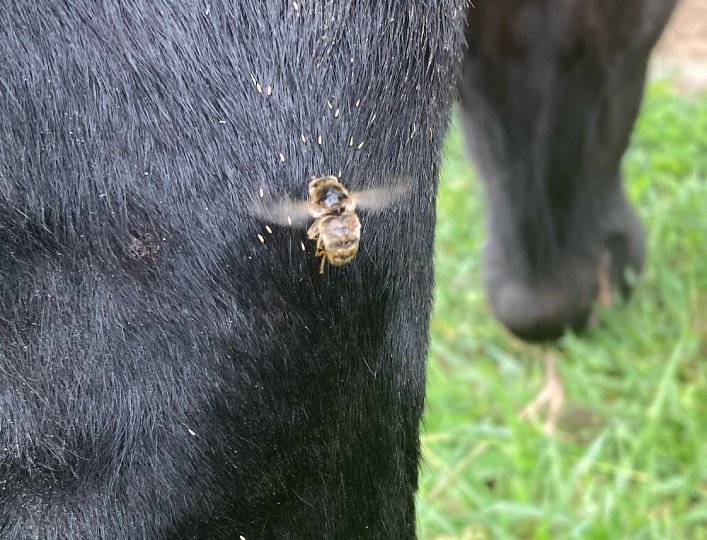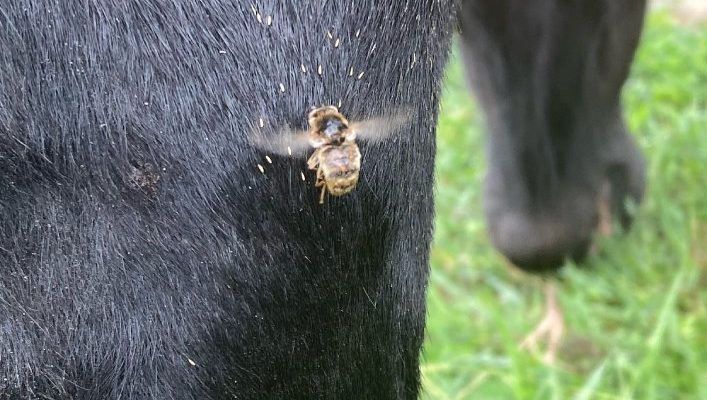
So, how do these insidious little creatures manage to deposit their eggs near animal homes? The answer lies in their unique behavior and biology. Botflies have developed a clever strategy that involves targeting specific animals for their next generation of larvae. Let me walk you through this captivating process step by step.
What Are Botflies?
Before diving deep into their fascinating reproductive habits, let’s take a moment to understand what botflies actually are. Botflies belong to the family **Oestridae** and are often found in tropical and subtropical regions. They’re not your typical flies; in fact, they look more like little furry bees with a distinctive dull grayish color.
These insects don’t just land anywhere. They’re selective in where they lay their eggs. The female botfly typically targets mammals, including rodents, deer, and even domestic pets. Here’s the kicker: **botfly larvae are parasitic**, meaning they live off their host until they mature enough to exit and start the cycle over again. Isn’t that a wild twist?
The Egg Laying Process
Now that we have a handle on what botflies are, let’s dive into how they lay their eggs. After mating, a female botfly must find the perfect spot to deposit her eggs. But what qualifies as a “perfect spot”? Well, that’s where animal burrows come in.
1. **Finding a Host**: The **female botfly** uses her keen senses to locate potential animal hosts. Often, she’ll hover near burrows or areas where animals are known to frequent.
2. **Egg Deposit**: Once she identifies a suitable burrow, she lays her eggs in a strategic spot—often in the furry coat of an unsuspecting mammal. This can happen either directly or via a more complex method involving another insect, like a mosquito, acting as a delivery system. Yes, it can get a bit intricate!
3. **Hatching**: After a few days, the eggs hatch, and the larvae begin their journey, burrowing into the host’s skin, where they will continue their development.
You might be wondering why this method is so effective. Well, by laying eggs near burrows, botflies ensure that their larvae have immediate access to a live host, which provides them the nutrients they need for growth.
Animal Burrows as Ideal Locations
What is it about animal burrows that makes them such prime real estate for botflies? Think of a burrow as a cozy home—a safe, warm environment that offers both protection and easy access to food.
– **Temperature Control**: Burrows maintain a stable temperature, which is crucial for the developing larvae.
– **Rich Resources**: Hosts like rodents or rabbits are often plentiful in areas surrounding burrows, giving larvae a steady supply of nutrition.
– **Natural Hidden Spots**: The burrow protects the larvae from predators and the elements, increasing their chances of survival.
So, when a botfly strategically lays its eggs near these burrows, it’s like staking a claim on a buffet!
The Life Cycle of a Botfly Larvae
Once the larvae penetrate the host’s skin, they embark on a rather dramatic life cycle. Here’s how it unfolds:
1. **Growth Stage**: The larvae feed on the host’s tissue while remaining relatively safe within their burrowed area. They can grow quite large—up to an inch long!
2. **Maturation**: After several weeks of feeding, the larvae will mature and prepare to exit the host.
3. **Emergence**: Eventually, the mature larvae will leave the host’s body, usually through a natural opening or a wound, and drop to the ground, where they will pupate and eventually emerge as adults.
This life cycle is not just fascinating but also highlights the intricate relationships between species in ecosystems.
The Risks to Hosts
While you might think the story ends here, there’s a darker side to the botfly’s life cycle. The presence of botfly larvae can pose serious health risks to their hosts. Here are a few things to consider:
– **Infection**: The entry point where the larvae penetrate the skin can become infected. This might lead to inflammation or serious health issues for the host animal.
– **Nutritional Impact**: As the larvae feed on the host’s tissue, they can compromise the animal’s health, potentially leading to weakness or even death in severe cases.
– **Behavioral Changes**: Infested animals may show behavioral shifts, as the discomfort can affect their usual habits and mobility.
This dynamic reflects the balance of nature, where one species’ survival often comes at the expense of another.
Human Interactions and Botflies
You might be curious about how botflies affect humans. While these creatures often target animals, there are instances when they can infect humans as well, resulting in the condition known as **cutaneous myiasis**. Here’s how that can happen:
– **Accidental Contact**: A human might inadvertently come into contact with botfly eggs, particularly if they’re near infested animals.
– **Symptoms**: If a human were to become a host, they might experience discomfort, swelling, and even visible larvae beneath the skin. While this sounds alarming, it’s treatable with medical intervention.
Ultimately, it’s a reminder of how interconnected life is and how even the smallest insects like botflies play a role in the ecosystem.
Protecting Animals from Botfly Infestations
So, what can we do to help protect animals from these unwelcome guests? Here are some thoughtful measures:
– **Regular Veterinary Check-ups**: Ensuring pets and livestock receive regular health check-ups can help catch any infestations early.
– **Anti-parasitic Treatments**: There are treatments available that can prevent botfly larvae from taking hold. Consulting a veterinarian can provide the best options.
– **Monitor Outdoor Time**: Keep an eye on pets when they’re out and about, especially in areas known for botfly activity.
Keeping our furry friends safe from these pesky critters is crucial for their health and well-being.
In conclusion, the life cycle of botflies might seem grim, but it’s an incredible example of nature’s complexity. From their unique egg-laying techniques near animal burrows to their parasitic existence, botflies play an essential role in their ecosystems. By understanding their habits, we can better protect our animals and appreciate the intricate web of life they’re a part of. So, the next time you’re out in nature, take a moment to think about what’s happening just below the surface!

